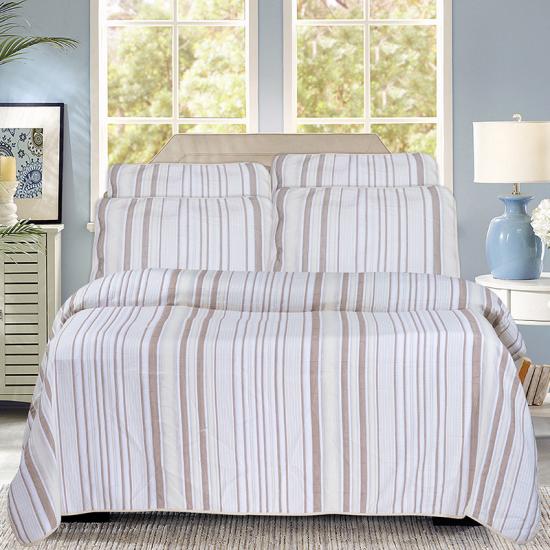Thread count refers to the number of threads per square inch of fabric in a jacquard quilt. It is measured by counting the various horizontal (weft) and vertical (warp) yarns within a single rectangular inch and combining them to obtain the overall yarn count.
In jacquard quilts, traditional looms are used to create intricate patterns and designs. This method involves individual threads being raised or lowered to create a specific weaving pattern. Because jacquard quilts are typically more intricate and have a higher pattern density, the yarn count will tend to be higher compared to a regular quilt.
Importantly, however, a higher thread density does not always indicate a better jacquard quilt. While higher yarn quality contributes to the overall performance of a jacquard quilt, there are other factors that determine the overall performance and comfort of a jacquard quilt.

Other key aspects to consider when determining satisfaction with a jacquard quilt include the type and comfort of the yarn used, the weaving method used, and the overall quality of the quilt. Factors such as fiber type (e.g., cotton, silk, polyester), thread diameter (fineness), and weave density also play a role in the high quality of a quilt.
Carefully crafted jacquard quilts balance the above factors to provide a luxurious and durable fabric even with a low thread count. On the other hand, a quilt with poor construction and a high thread count may not provide the desired comfort and longevity.
Therefore, when evaluating the quality of a jacquard quilt, it is recommended to consider the yarn count in combination with other factors. It is recommended to evaluate the overall craftsmanship, fabric composition, and reputation of the manufacturer or brand to make an informed decision.















.jpg?imageView2/2/format/jp2)
.jpg?imageView2/2/format/jp2)
.jpg?imageView2/2/format/jp2)
.jpg?imageView2/2/format/jp2)
.jpg?imageView2/2/format/jp2)
.jpg?imageView2/2/format/jp2)
.jpg?imageView2/2/format/jp2)

.jpg?imageView2/2/format/jp2)